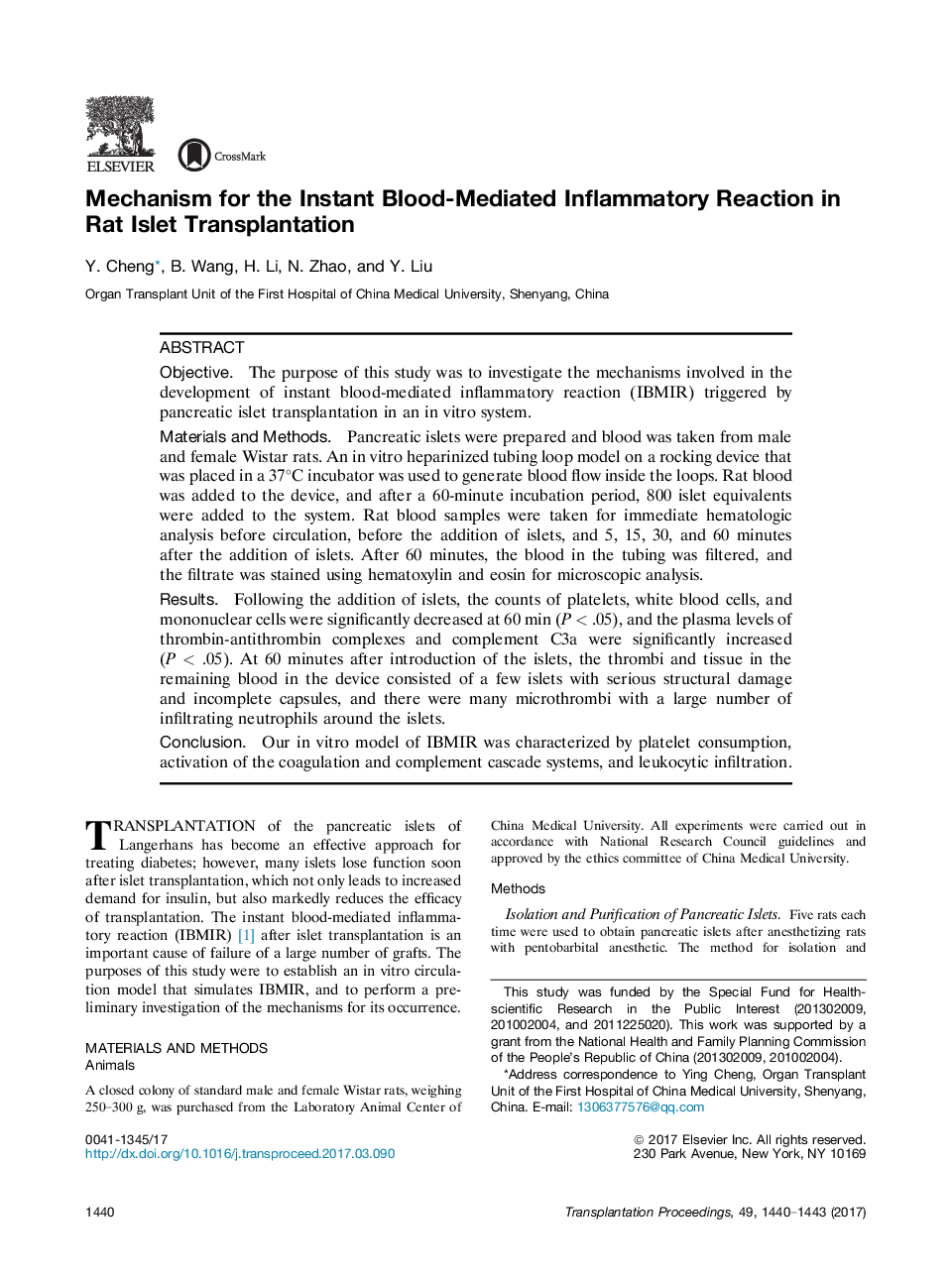| Article ID | Journal | Published Year | Pages | File Type |
|---|---|---|---|---|
| 5728707 | Transplantation Proceedings | 2017 | 4 Pages |
â¢The mechanisms involved in the development of IBMIR were investigated.â¢Following the addition of islets, the counts of platelets, white blood cells, and mononuclear cells were significantly decreased at 60 minutes.â¢In vitro model of IBMIR was characterized by platelet consumption, activation of the coagulation and complement cascade systems, and leukocytic infiltration.
ObjectiveThe purpose of this study was to investigate the mechanisms involved in the development of instant blood-mediated inflammatory reaction (IBMIR) triggered by pancreatic islet transplantation in an in vitro system.Materials and MethodsPancreatic islets were prepared and blood was taken from male and female Wistar rats. An in vitro heparinized tubing loop model on a rocking device that was placed in a 37°C incubator was used to generate blood flow inside the loops. Rat blood was added to the device, and after a 60-minute incubation period, 800 islet equivalents were added to the system. Rat blood samples were taken for immediate hematologic analysis before circulation, before the addition of islets, and 5, 15, 30, and 60 minutes after the addition of islets. After 60 minutes, the blood in the tubing was filtered, and the filtrate was stained using hematoxylin and eosin for microscopic analysis.ResultsFollowing the addition of islets, the counts of platelets, white blood cells, and mononuclear cells were significantly decreased at 60 min (P < .05), and the plasma levels of thrombin-antithrombin complexes and complement C3a were significantly increased (P < .05). At 60 minutes after introduction of the islets, the thrombi and tissue in the remaining blood in the device consisted of a few islets with serious structural damage and incomplete capsules, and there were many microthrombi with a large number of infiltrating neutrophils around the islets.ConclusionOur in vitro model of IBMIR was characterized by platelet consumption, activation of the coagulation and complement cascade systems, and leukocytic infiltration.
